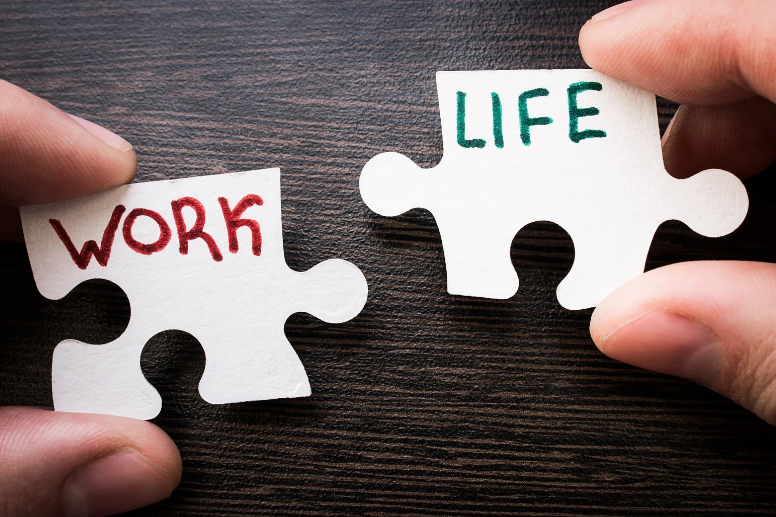
When you first start making room for healthy habits in your busy life, being a stickler can be beneficial—setting a workout schedule, planning your meals in advance, saying no to things that get in the way of your goals. Without giving yourself some rules—and being a little inflexible—at the beginning, you’ll be likely to fall off the wagon much more quickly.
But as you build your habits, you'll eventually discover that things don't always go according to your plan. There will undoubtedly be road bumps (an unexpectedly long work day), detours (your favorite body sculpting class gets cancelled) and setbacks (birthday cake!). If you rigidly follow your plan instead of being a little flexible once in a while, you could do more harm than good.
Experts in behavior science view mental flexibility not as a personality trait or a state of mind, but as a set of behaviors that can be changed. Everyone is flexible about some things and inflexible about others. When you think about flexibility as "something I do" and not "who I am," you will start to realize that you can make lasting, positive changes that may open up opportunities for some relaxation, laughter and joy amid the daily grind. If you feel like you’ve become a bit of a stickler about strict schedules and perfect plans, it may be time to loosen up and become more flexible. Here's how.
Accept Your Behavioral History
People often talk about Type-A characteristics as if they are inherent personality traits. But most people didn’t become inflexible and perfectionistic overnight. There have probably been many times in your past when your perfectionism paid off: You led study groups (complete with mock quizzes) for your middle school friends. You hosted an impromptu bachelorette party for a girlfriend when the maid of honor’s venue fell through. You volunteered for your kindergartener’s dance recital and ended up coordinating the whole production (which received a standing ovation). The science of behavior holds that we will continue doing those things that get recognized, revered and rewarded. The reason that you’ve developed so many take-charge tendencies is because, throughout your life, you’ve received lots of powerful praise for taking the reins.
Identify Places Where You Can Compromise
Perhaps you’re always the first to speak your mind in important meetings or you have a habit of jumping to point out grammatical errors in company communications. Maybe you're "that parent" on the field, making playbook suggestions to your child’s soccer coach while the other parents simply cheer from the bleachers. None of these habits are inherently wrong in and of themselves, but there’s a fine line between being assertive and being domineering.
In order become more flexible, it helps to first recognize and record situations where you most frequently try to steer the ship. Observing your own inflexible behavior lets you notice those situations where you could sometimes stand back a bit and let others take the lead. At this point, you’re not trying to change your behavior; you're simply becoming aware of the points in your day where you could opt to be less rigid. Jot down these situations for future reference.
Practice Flexible Actions
You know that practicing yoga, stretching after workouts and getting regular massages can all help your body become more flexible. Of course, we’re not talking about physical flexibility in this instance, but many of the same philosophies apply to your mental behaviors.
In yoga, if you want to really get a good stretch and build strength, you’ve got to come to class regularly and practice your postures, continuously pushing yourself a little further. Similarly, if you want to maintain a mellow attitude, you’ve got to practice stretching beyond the normal limits of your mental flexibility. For example, if you’re constantly cleaning up the kitchen and bathroom before you leave for work, you can practice your flexibility a few mornings a week by leaving the breakfast dishes in the sink and the bathroom counter a mess. If you’re the one that always makes the weekly date night plans, let your hubby know that you’re leaving this week’s reservations up to him. Each time you stretch and try a new way of interacting with your environment, you become more flexible and it becomes easier to let go. Again, as it is in yoga, so it can be in life!
Set Small Goals for Mental Stretching
Once you’ve spent some time observing and tracking your inflexible behaviors and you’ve started to practice being flexible in certain situations throughout your day, the next step is to set small goals for mental stretching. Great runners set weekly mileage goals when they’re training for a marathon. Successful dieters set reasonable targets for steady weight loss each week. If you want to keep up your motivation and see change quickly, choose how many times you’ll be flexible throughout your day or week, write down your goal and post it where you can see it.
How will you know whether your habits are really improving? Make sure to track your practice. Jot it down in your planner. Text or email yourself a quick note. Make a chart and stick it on the fridge (after all, you love charts!). As you see your behaviors moving toward that goal line each week, you’ll know that you’re moving toward a lasting change.
Reward Your Choice to Retreat
Because patterns of inflexible behavior develop over long periods of time, changing them is a big challenge. For a while, you’re likely to feel uncomfortable practicing your flexibility in everyday situations. It will be tough to bite your tongue when things (like laundry, planning, creating employee schedules, packing lunches, following up on emails, etc.) aren’t being done to your exacting standards.
During this transition, you can make use of some extra incentives to keep you motivated to mellow out. Do you like back massages, nights at the theater, and bouquets of fresh cut flowers? Well, here’s your chance to have them all! Using the goals you’ve set for your mental stretching, build in rewards like these for sticking to your program each week. If you let a co-worker field those nonessential group emails today, give yourself a pat on the back and a piece of dark chocolate. If you chose to sit silently in the passenger’s seat instead of navigating aloud each time your daughter was at the wheel this week, get your nails done over the weekend.
Adding in incentives will help you start to rewrite your own behavioral history. You’ll be earning the things you like for being flexible instead of being perfect. You can use rewards to grow your flexibility until going with the flow starts to become a more natural reaction. And, the best part is you can come back to this strategy whenever you notice yourself slipping into those stale, old patterns of rigidity.
Learn that Failure is Functional
Becoming more flexible is a great wellness goal, especially for busy women, wives and moms, who often shoulder a heavy load. It takes time to learn to let go and to share some of your burdens with others. As you attempt more flexible actions each day, notice some of the stress being lifted from your life. Sure, there will be days when that pesky perfectionism bug comes back to sting you. Perhaps you’ll fall back into control while preparing an important work project or planning a family vacation.
When you fail to be flexible, you can come to realize your most menacing triggers. The next time you’re faced with a similar situation, you can try to manipulate the circumstances in your favor (e.g., ask for extra time on big projects or recruit someone to help make travel plans). Just remember that falling into inflexible habits for a little while is OK, because now you’ve got the strategies to go back and stretch those mental muscles!












